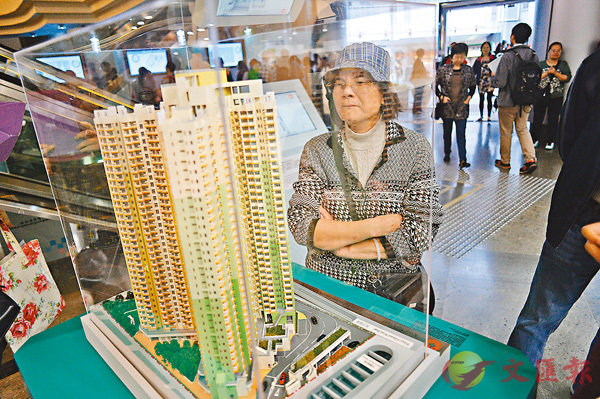 ■積金局正在研究是否容許市民動用強積金作首次置業用途。 資料圖片
■積金局正在研究是否容許市民動用強積金作首次置業用途。 資料圖片【原文】積金局正在研究是否容許市民動用強積金作首次置業用途(early withdrawals)。財經事務及庫務局11月5日指出,預計明年第二季前向政府提交報告,暫時未有任何時間表。
研究容許動用強積金作首置用途的議題一經提出,坊間輿論多認為在做法上(approach)和時機上(timing)均值得商榷(dubious),建議政府應三思而行。
樓價若跌 退保物業價值「雙失」
最為公眾關注的是,容許強積金作首置買樓,有違強積金作為退休儲備的目的(objective)。本港絕大部分打工仔都沒有其他退休保障(retirement protection),強積金最重要的作用,就是應付市民退休生活的需要,這是強積金制度設立的本意。
樓宇價格可升可跌且波幅很大(prone to volatility),一旦市民提取強積金「上車」之後遇上樓價下跌,很容易面對失去退休保障和物業價值下跌的雙輸困局,這種風險不可低估。
另一方面,本港強積金戶口平均結餘只是大約18萬元,但現時樓市熾熱(overheated),一個私樓「上車盤」("starter homes")動輒五六百萬元,首期動輒逾200萬元,究竟容許提取多少比例強積金為宜呢?若全數提取等於將退休積蓄清零,明顯不可行;若提取一半,則只有十萬八萬元,連支付印花稅、律師費和代理佣金都未必夠,對幫助首置人士上車杯水車薪。
亦有意見認為,可以容許提取強積金買綠置居、居屋等資助房屋,但此類房屋本來已容許承造九成或更高的按揭,以首個綠置居項目景泰苑為例,最高可造九成五按揭(mortgages),最少5萬元就可以做業主,亦毋須動用強積金。
背道而馳 谷熱樓市
本港樓市正處於歷史高位,當局過去接連推出辣招,都是為了調控樓價。如果當下容許提取強積金置業,很容易被市場解讀(misinterpret)為向樓市「泵水」的信號,與調控樓價的目標背道而馳,樓價更加飆升,普羅市民更加置業無望,允許以強積金置業豈不是等同谷熱樓價,當局是想幫市民,還是幫發展商(property developers)?
誠然,新加坡的中央強積金制度,的確容許提取部分以購置組屋,相關政策亦行之有效,但新加坡的僱員和僱主供款(contribution rates)比例分別高達薪金的20%和17%,分設醫療戶口、特別戶口和普通戶口,其用途本來就比香港廣泛。以香港當前僱員和僱主合共月薪10%的供款比例,保障退休生活尚嫌不足,實不能照搬(paste)新加坡的一套。
置業固然是廣大市民的願望,但保障安享晚年的訴求亦不容忽視。對於以強積金置業的建議,當局必須全面周詳考慮,聽取社會各界的疑慮和擔憂,切勿輕率(rash )決定。 (標題及小標題為編輯所加) (摘錄自香港文匯報社評6-11-2017)
MPF withdrawal for home purchase should be deliberated
【譯文】The Mandatory Provident Fund Schemes Authority (MPFA) is currently studying the feasibility of allowing early withdrawals for first time home buyers. The Financial Services and the Treasury Bureau said on 5 November that the report is expected to be compiled to the government by second quarter of next year, but there is no specific timetable as yet.
As soon as the topic of MPFA considering early withdrawals for home purchases hits the news, the public sentiment has already seem to be dubious about its approach and timing, with a lot of voices suggesting the government to think twice before implementing the idea.
Risks of "double losses"
The public's biggest concern in allowing withdrawal for home purchase, is that it would be incongruous with the original policy objective of helping people to save for their retirement. The vast majority of Hong Kong wage earners rely solely on MPF in regards to retirement protection, and retirement protection is the original and most important purpose of MPF. As home prices would fluctuate and are prone to volatility, citizens who withdraw MPF funds for their first home might be faced with a no-win situation when the housing market slumps. They would lose both their retirement protection and the value of their property. Such risks must not be underestimated.
Meanwhile, as MPF participants on average only have HK$183,000 in their accounts, how should the withdrawal ratio be determined amid an overheated property market, when the so-called "starter homes" cost HK$5 to 6 million with over HK$2 million down payment? Full withdrawals would be obviously impractical. Yet, if the limit is set at a mere 50 per cent, then the meagre amount of money would barely pay off the stamp duty, legal cost and commission of estate agents, which would not help home buyers much.
There are also suggestions to allow MPF withdrawal in buying subsidised flats of the Green Form Subsidised Home Ownership Pilot Scheme (GSH) and the Home Ownership Scheme (HOS). However, buyers of these subsidised flats could already get a mortgage loan of up to 90 per cent of the property value. Taking King Tai Court, the first GSH project, as an example, buyers were offered up to 95 per cent mortgages. The cheapest flats were sold with a down payment of only HK$50,000. Apparently, there is no need to withdraw funds from MPF in such cases.
May heat up property market
In recent years, the authorities have been busy pushing cooling measures so as to control the skyrocketing home prices. If MPF withdrawal for home purchases becomes a thing anytime soon, there is a chance that investors will misinterpret the policy as the government providing a boost to the property market. The policy would then defeat its own purpose as prices are set to rise even higher, and first time buyers would have their dreams shattered. To put it into perspective, is it really a helping hand from the government to first time home buyers, or is it a subtle way to promote the interests of property developers?
Granted, Singapore's Central Provident Fund (CPF) is a successful example which allows early withdrawal for the purchase of public housing, but the employees' and employers' contribution rates for the CPF are as high as 20 per cent and 17 per cent respectively. It is also multipurpose in nature, with three sub-accounts for retirement, medical services and general purposes. The MPF pales in comparison as the combined contribution rate is only at 10 per cent of the employee's monthly salary. In this sense, the retirement protection of MPF is already questionable, therefore it would be unwise to copy the Singaporean policy and paste it into Hong Kong.
Buying a home is an understandable wish of the people of Hong Kong, yet the need for a financially secure retirement must not be ignored. The authorities must comprehensively deliberate all relevant factors, address and listen to the doubts and concerns of the public, and refrain from making any rash decisions.■Jeffrey Tse [ywc_jeffrey@hotmail.com]
Exercise
1. 逆按揭/ 安老按揭
2. 公屋
3. 運房局
4. 港人首置上車盤計劃
5. 累算權益(強積金)
Answers
1. reverse mortgage
2. public rental housing
3. Transport and Housing Bureau
4. "Starter Homes" scheme
5. accrued benefits

